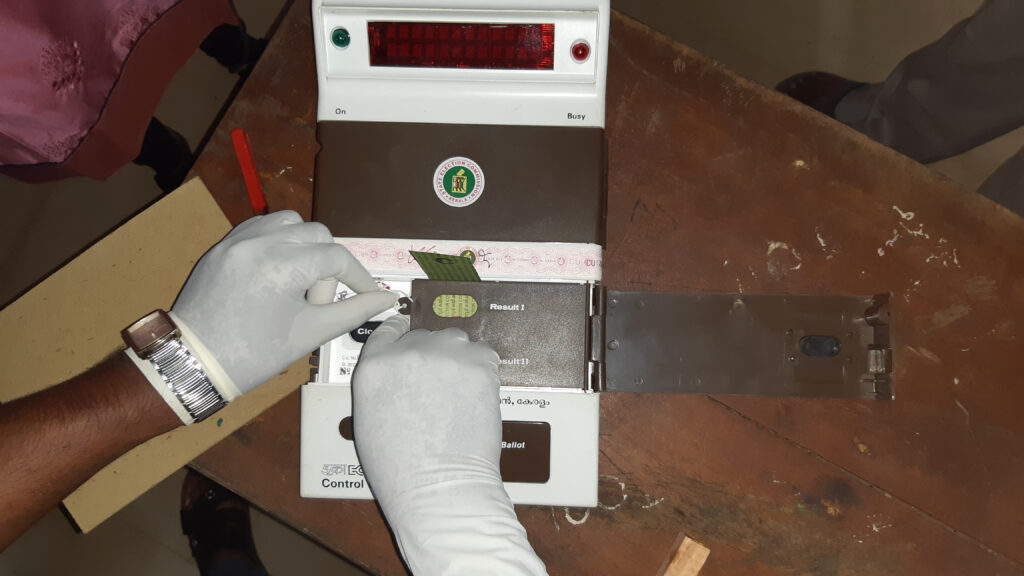The integrity of elections is a cornerstone of any democratic society. To ensure fair and accurate elections, many countries use electronic voting machines. However, concerns about the security of these machines have been raised, and the possibility of hacking them has become a hot topic in recent years. In this article, we will explore whether it is possible to hack a voting machine, the security measures in place, and the broader implications for democracy.

Understanding Electronic Voting Machines
Electronic voting machines, or EVMs, are devices designed to record and count votes during an election. They have been used in various forms across the globe, offering several advantages, including faster and more accurate vote counting and reducing the risk of human error. Common types of EVMs include Direct Recording Electronic (DRE) machines and Optical Scan machines:
-
Direct Recording Electronic (DRE) Machines: DRE machines are touchscreen devices where voters make their selections electronically. Votes are stored within the machine’s memory.
-
Optical Scan Machines: These machines use paper ballots, which voters mark with a pen. The ballots are then scanned and counted electronically.
Security of Electronic Voting Machines
To ensure the security of electronic voting machines, manufacturers and election authorities implement several measures:
-
Physical Security: EVMs are stored securely before and after elections to prevent tampering. They are often sealed with tamper-evident seals.
-
Encryption: Many voting machines use encryption to protect stored and transmitted data, making it challenging for attackers to intercept or manipulate the information.
-
Secure Boot Processes: EVMs typically employ secure boot processes to ensure that only authorized software is loaded onto the machine.
-
Access Control: Access to the machines is restricted, and only authorized personnel can operate and configure them.
-
Testing and Certification: Voting machines undergo extensive testing and certification by independent agencies to verify their functionality and security.
Is It Possible to Hack a Voting Machine?
The possibility of hacking a voting machine does exist, but it is essential to understand the practical challenges and limitations involved:
-
Physical Security: Hacking a voting machine typically requires physical access to the device, which is well-guarded and monitored before and during elections.
-
Encrypted Data: The encryption used in voting machines is designed to be highly secure, making it difficult for attackers to tamper with the data stored or transmitted.
-
Access Control: Voting machines are typically only operated by authorized personnel, which minimizes the risk of external hacking.
-
Independent Testing: Voting machines undergo rigorous testing and certification to identify and rectify security vulnerabilities.
-
Auditing and Verification: Many election systems have post-election auditing procedures to cross-verify electronic results with paper ballots.
Potential Risks of Hacked Voting Machines
Hacking a voting machine could have severe consequences for the democratic process, including:
-
Tampering with Election Results: Hackers could alter the recorded votes, skewing the election results and undermining the will of the people.
-
Discrediting Elections: If a voting machine is successfully hacked, it can cast doubt on the credibility of the entire election, leading to mistrust in the electoral process.
-
Erosion of Democracy: Hacked voting machines can erode the foundational principles of democracy, potentially leading to political instability.
-
Security Concerns: A successful hack raises concerns about the security of all future elections, prompting calls for stronger safeguards.
Protecting Voting Machines
To minimize the risk of hacking voting machines and safeguard the integrity of elections, various measures are taken:
-
Secure Storage: Ensure that voting machines are securely stored before, during, and after elections to prevent tampering.
-
Access Control: Restrict access to voting machines to authorized personnel only, reducing the risk of external tampering.
-
Auditing and Verification: Implement rigorous post-election auditing procedures to verify electronic results against paper ballots.
-
Paper Trail: Some EVMs include a paper trail or voter-verified paper audit trail (VVPAT) that allows voters to verify their selections before casting their votes.
-
Testing and Certification: Continue to subject voting machines to thorough testing and certification by independent agencies to identify and address vulnerabilities.
-
Encryption: Maintain strong encryption protocols to protect the data stored and transmitted by voting machines.
Conclusion
While the possibility of hacking a voting machine does exist, the practical challenges and security measures in place make it extremely difficult for attackers to succeed. Election authorities, manufacturers, and independent agencies work tirelessly to ensure the security and integrity of the democratic process. However, the importance of remaining vigilant and continuously improving security measures cannot be overstated.
Safeguarding elections is a shared responsibility that involves not only election authorities and manufacturers but also the vigilance of the public. It is crucial to maintain trust in the electoral process and protect the foundation of democracy by using and continually enhancing secure and transparent voting systems. By doing so, we can ensure that the will of the people is accurately reflected in election results, preserving the democratic principles that underpin our societies.